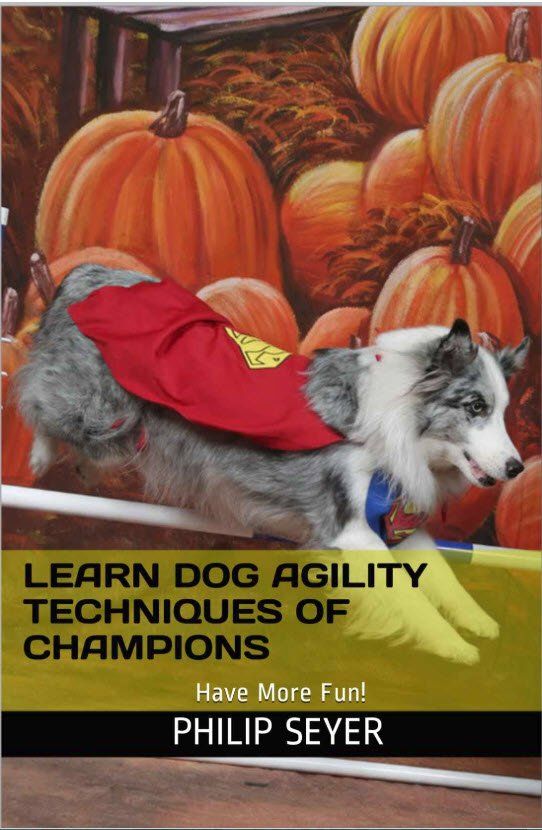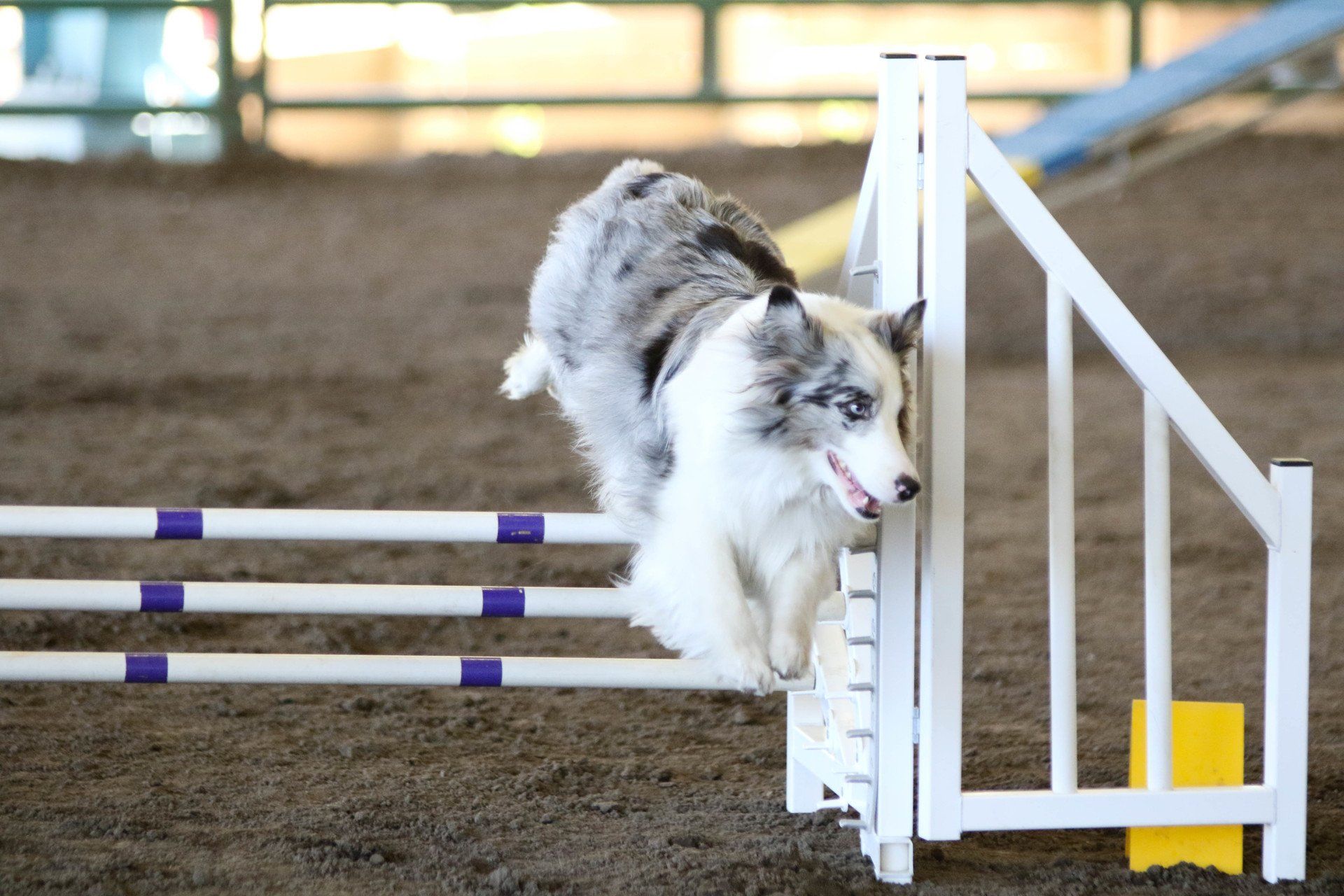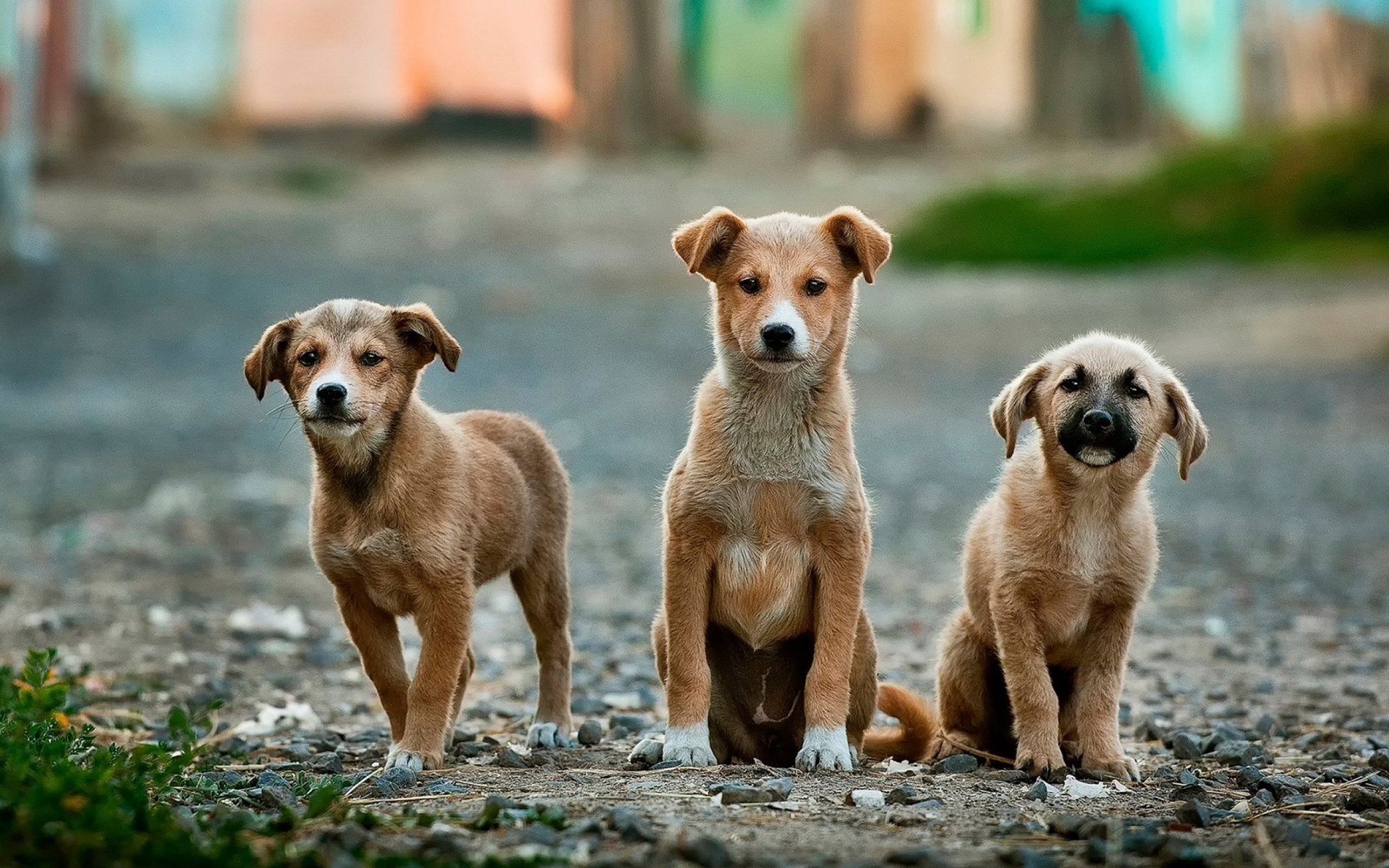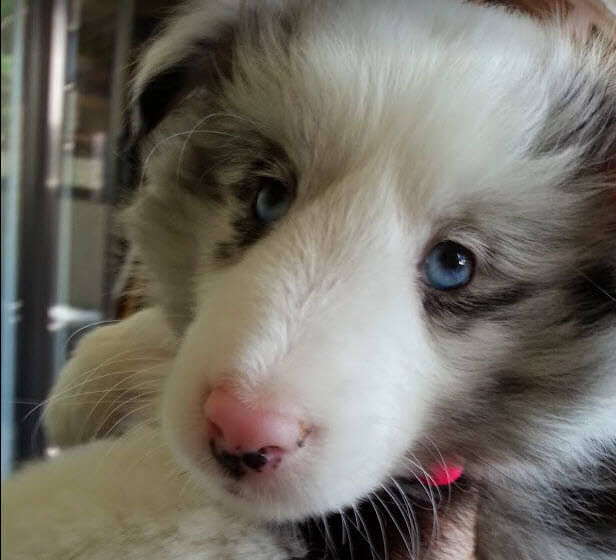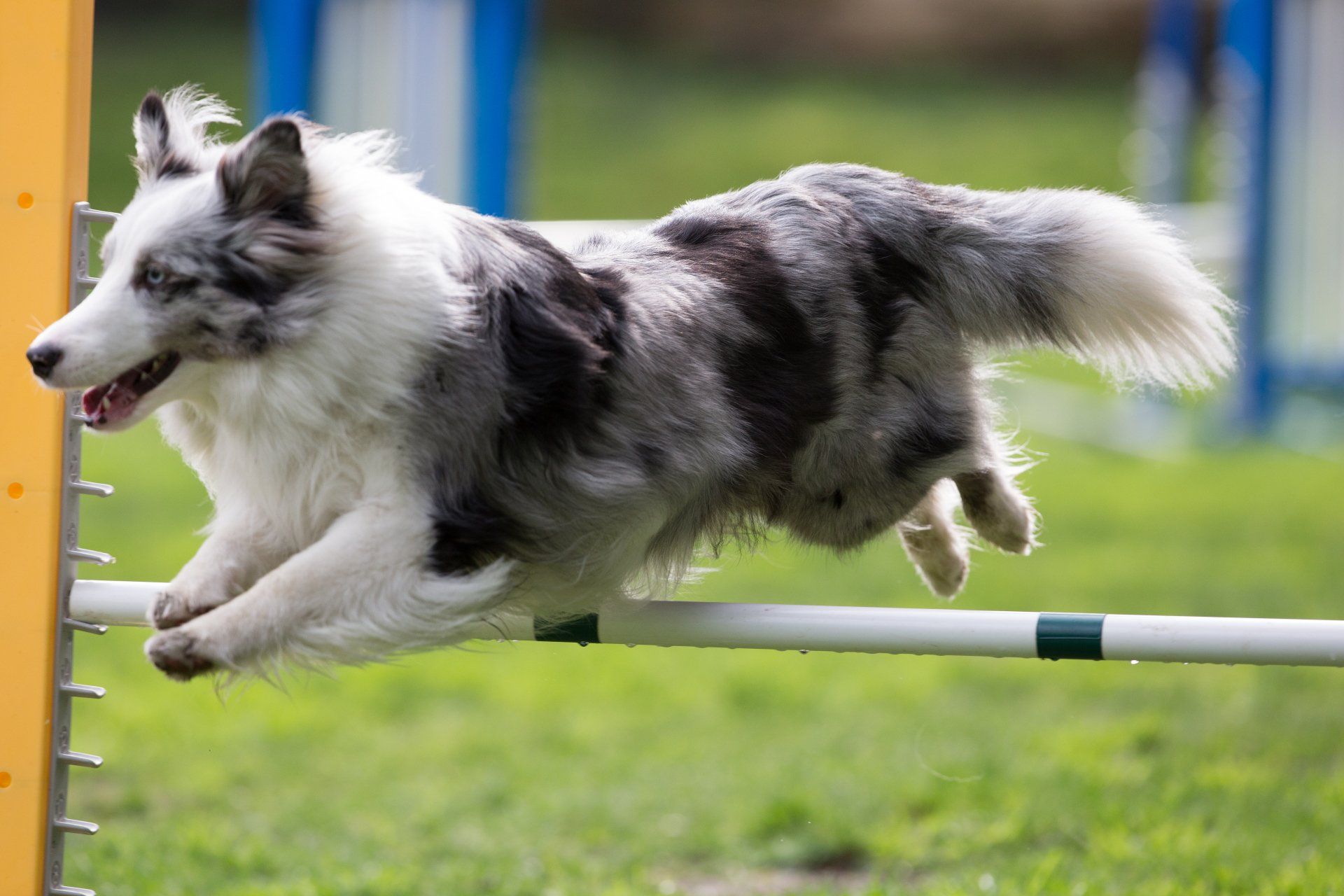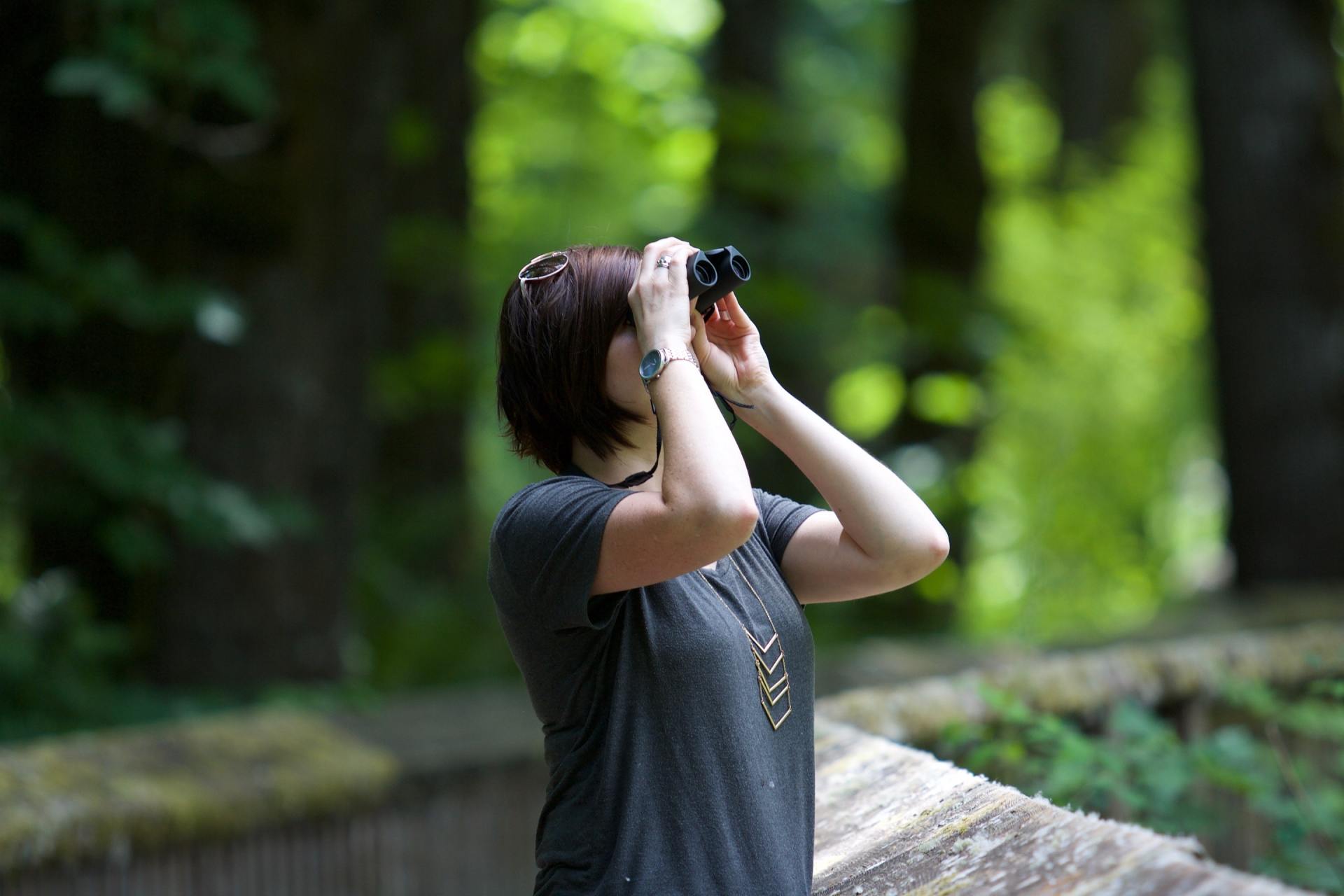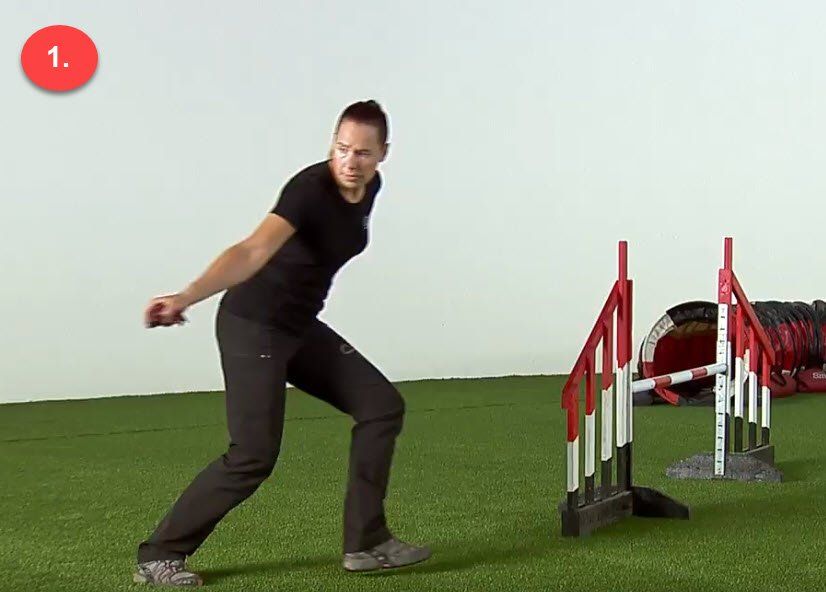
"Japanese" Dog Agility Handling Technique
The Japanese is a dog agility handling technique for leading a dog around to the backside of a jump. The technique was discovered and named by the ace dog agility handler, Janita of One Mind Dogs.
When traveling to Japan for dog agility, Janita noticed nearly all the handlers were using a distinctive
method for leading the dogs around to the backside of a jump. So she named this method The Japanese.
In the accompanying photo, you see Tulia of One Mind Dogs using a Japanese. She is starting to lead a back side jump by running with her dog
around to the back of the jump. Her dog is not yet in the picture!
In Photo #1, which arm is Tulia using to lead her dog? (RIGHT/LEFT) (Pick one.)
(Check your answer below.)
In Photo #1 Tulia was leading with her RIGHT arm. In Photo #2, we still do not see Tulia's dog. She is still leading with her right hand and she is still showing her dog the right side of her face.
Please study Photo #2 and answer these questions:.
1. Which arm is leading?
2. Is the other arm up?
(Check your answer below.)
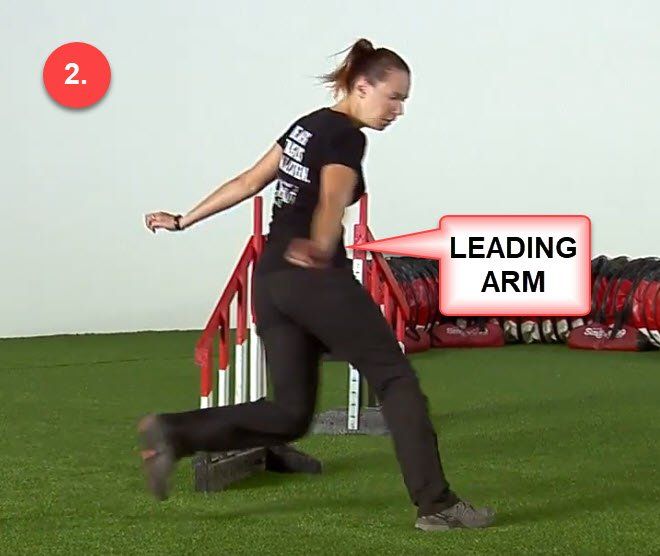

Answers to questions about Photo #2.
:
1. In Photo #2 above, Tulia is leading with her RIGHT arm.
2. In Photo #2 above, Tulia's other arm (her LEFT) is coming up.
(She looks like a child pretending to be an airplane.)
:
1. In Photo #2 above, Tulia is leading with her RIGHT arm.
2. In Photo #2 above, Tulia's other arm (her LEFT) is coming up.
(She looks like a child pretending to be an airplane.)
- - -
In Photo #3, Tulia has run around to the backside, and her dog has entered the picture!Please choose the correct word or phrase to answer the following questions about Photo #3.
1. In Photo #3, Tulia has/has not
(pick one) turned her head.
2. She has has not (pick one) changed her leading arm.
(Check your answer below.)
Answers to Question about Photo 3.
2. In Photo 3, Tulia has changed her leading arm (to her left).
1. In Photo 3, Tuilia has
turned her head (to the LEFT) -- this is a strong cue to the dog to change sides and follow Tulia on her left side. At first her dog was on her right.
2. In Photo 3, Tulia has changed her leading arm (to her left).
In Photo #4 you can see ace dog agility handler Tulia guiding her dog over the jump, executing the Japanese gambit adroitly with aplomb.
Do you think Tulia was waving her hand vigorously
and strongly
to signal the jump?
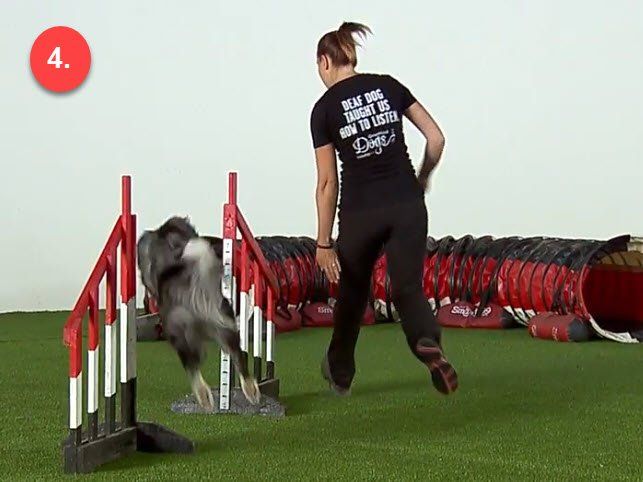
Does the Japanese Dog Agility Technique make use of a Blind Cross?
Yes/No
(pick one)
Check out the 4.18.15 Finn OMD Seminar Video. The video will make it clear whether a Blind Cross is needed with the Japanese Handling Technique.
Answers to questions about Photo #4.
:
Actually, no. Tulia is not waiving her hand vigorously and strongly. That's a bit hard to see in a still photographer. That's why I am showing your a One Mind Dog video from YouTube so you can see her arm action more clearly.
:
Actually, no. Tulia is not waiving her hand vigorously and strongly. That's a bit hard to see in a still photographer. That's why I am showing your a One Mind Dog video from YouTube so you can see her arm action more clearly.
In the OneMindDogs.com
method handlers are taught to use their head, chest, laser pointer, and eyes as the primary means to cue dogs where to go. They are often told NOT to waive their arms so much!
Check out the video which shows several ace OMD handlers demonstrating the Japanese include the awesome Janita herself in the flesh! (Well, almost. It's really a YouTube video showing Janita.)
When you see a red X
in the video, please know that an incorrect handling technique is being demonstrated.

Answer. Yes. A Blind Cross is needed. You can hear the instructor calling out "Blind" just before the handler performs the Blind Cross. To make this crystalline clear, in Photo #5, I've labeled the point n the video where the instructor calls out "Blind."
Question. When is a Japanese useful? Why might you use it instead of, say, a Forced Front Cross?
The Japanese may generally be used whenever a Forced Front Crossed is used or whenever a Backside Jump is required by the course map. But why is it useful?
It's especially useful for handlers who have difficulty turning sharply because of knee injuries. With the Japanese, you just continue to run forward although you do run kind of in a Serpentine like fashion.
Some dogs run faster when their handler is running with them. The Japanese is good for that. The Japanese may also work well in certain situations because it puts you in a place where it is easier to lead the dog to the obstacles to come after the backside jump.
So check out the course and decide if the Japanese technique fits the bill for each particular backside jump you encounter. Practice it a lot on your own with and without your dog before you use it in a trial!
So check out the course and decide if the Japanese technique fits the bill for each particular backside jump you encounter. Practice it a lot on your own with and without your dog before you use it in a trial!
Keep in mind, two, that having a name to give your movements will help you "chunk" the course and this will make it easier to remember. The Japanese like other names gambits can improve your ability to remember dog agility courses. They give the course a structure! This advantage is often overlooked. The elite handlers know it and use it..

Did you like this tutorial?
It's written in a Self-Teaching Guide Style I used for years in several books and in award winning University of California Extension courses. If you liked this approach you may want to check out my Kindle Self-Teaching Guide entitled LEARN DOG AGILITY TECHNIQUES OF CHAMPIONS.
I also recommend you try out a subscription to OneMindDogs.com -- tell e'm Phil Seyer sent you. :)
I also recommend you try out a subscription to OneMindDogs.com -- tell e'm Phil Seyer sent you. :)

